Trithrinax Campestris
Trithrinax Campestris, commonly known as the Blue Needle Palm, is a resilient and distinctive palm native to the dry, open areas of Argentina and Paraguay. This palm is known for its striking, blue-green fronds and its compact size, making it a popular choice for smaller gardens and containers. The Blue Needle Palm features a short, robust trunk and a dense crown of sharp, needle-like leaves that provide a unique, architectural element to landscapes.
- Botanical Name: Trithrinax Campestris
- Common Name: Blue Needle Palm, Palm de Campo
- Mature Height: 6-10 feet (1-3 meters)
- Mature Spread: 4-6 feet (1-2 meters)
- Growth Rate: Slow
- Light Requirements: Full sun to partial shade
- Soil Requirements: Well-draining soil; prefers sandy or loamy soils but tolerates various soil types
- Water Needs: Low to moderate; drought-tolerant once established
- Foliage: Evergreen, blue-green fronds with a spiky, needle-like texture
- Trunk: Short and robust, often covered with a pattern of leaf scars
Uses:
- Ornamental: Adds a unique and striking touch to gardens, landscapes, and public spaces with its distinctive blue-green fronds.
- Container Planting: Ideal for growing in large pots or containers, making it a great choice for patios, balconies, and indoor areas.
- Accent Plant: Creates a dramatic focal point in garden beds and landscaping designs.
Benefits:
- Compact Size: Ideal for smaller gardens and urban environments due to its manageable height and spread.
- Low Maintenance: Requires minimal care once established and is drought-tolerant, making it suitable for low-maintenance gardens.
- Unique Appearance: Its blue-green fronds and needle-like texture provide a distinct architectural element.
- Hardy: Adaptable to various soil types and light conditions, including arid environments.
Trithrinax Campestris is a visually striking and hardy palm that adds a touch of uniqueness and tropical flair to any landscape. Its compact size and distinctive fronds make it a versatile choice for both small and large spaces, offering both aesthetic appeal and practical benefits.
Debes acceder para publicar una valoración.
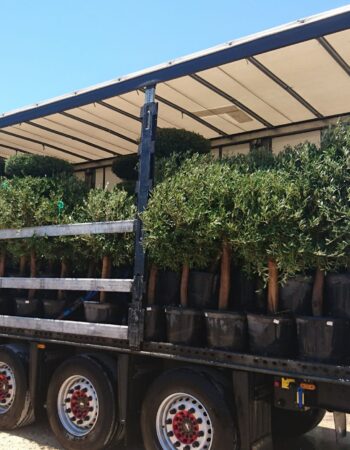
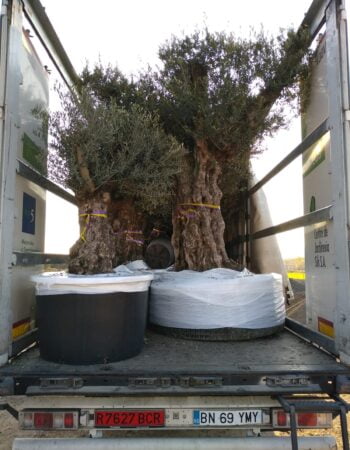
CAREFUL TREE TRANSPORTATION
At Treezom, we take great care in transporting your trees to ensure they arrive in perfect condition. Our expert team uses various methods, depending on the size and volume of the order, to provide safe and efficient delivery. Whether you're ordering a single tree or a bulk order, we guarantee high standards of handling and care throughout the process.
MULTIPLE SHIPPING METHODS
- Truck Delivery: Ideal for local or regional deliveries, ensuring a smooth and timely shipment of your trees directly to your location.
- Sea Containers (20’ or 40’): Perfect for larger orders or international shipping. Our sea containers are equipped to handle bulk shipments with optimal protection.
- Other Customized Solutions: Depending on the size and nature of your order, we can offer tailored shipping methods to meet your specific needs.
No matter the shipping method, we use specialized packaging and handling procedures to protect the trees during transit, ensuring they arrive healthy and ready for planting.
Below, you’ll find key tips tailored to this species’ requirements. Whether you’re new to plant care or have plenty of experience, these guidelines are here to support you in keeping your green companion healthy and vibrant.
- Planting:
- Choose a sunny or partially shaded location with well-draining soil.
- Dig a hole twice the width of the root ball and equal in depth.
- Place the palm in the hole, backfill with soil, and water thoroughly.
- Watering:
- Water regularly during the first year to establish a strong root system.
- After establishment, water infrequently, allowing the soil to dry out between waterings.
- Pruning:
- Remove dead or damaged fronds to maintain a clean and tidy appearance.
- Prune in late winter or early spring before new growth begins.
- Fertilizing:
- Apply a balanced, slow-release fertilizer designed for palms in early spring and late summer.
- Follow the manufacturer’s instructions for application rates.
- Pest and Disease Control:
- Monitor for common pests such as scale insects and spider mites.
- Use appropriate treatments to manage infestations.
- Ensure good air circulation around the plant to prevent fungal diseases and avoid overwatering.
*This information is provided for informational purposes only. For more detailed care, please consult a professional Gardener or Arborist.


 SINGLE TREE
SINGLE TREE OUTDOOR POTS
OUTDOOR POTS

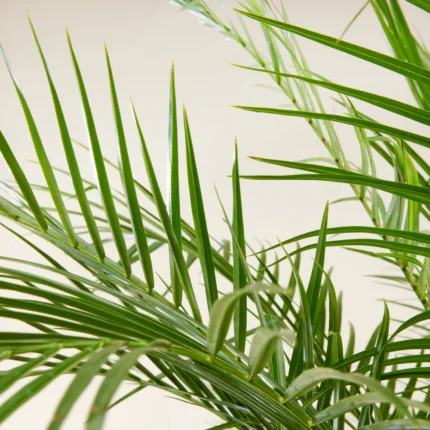

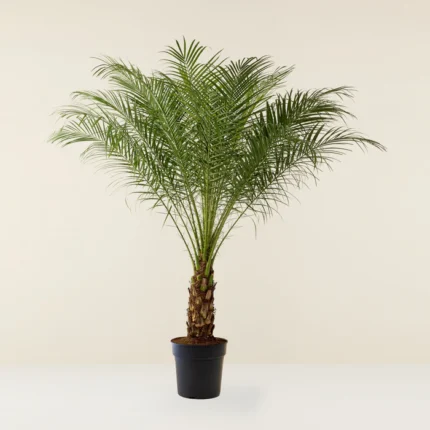


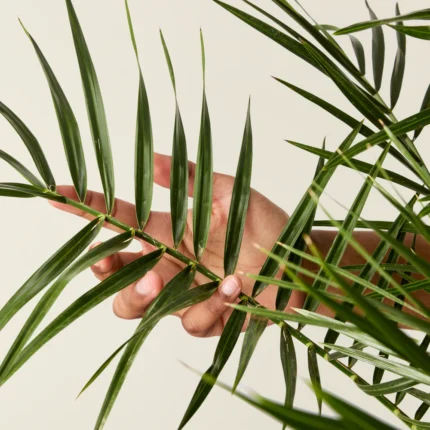
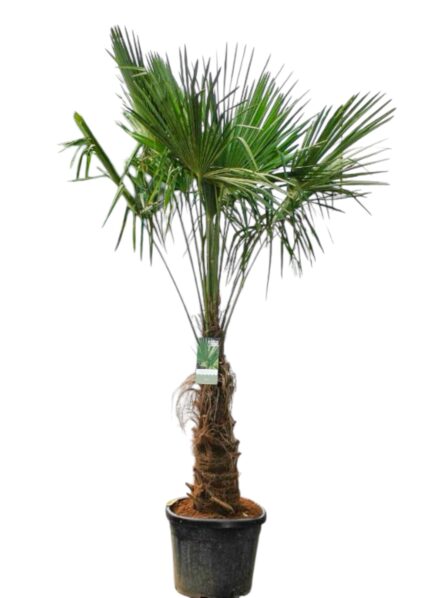






 Single Tree
Single Tree
Valoraciones
No hay valoraciones aún.